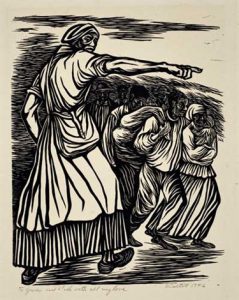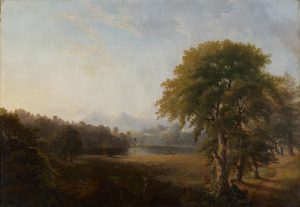


How have artists, over the last two centuries, approached the subject of slavery? In spring 2017, the class Seeing to Remember: Representing slavery Across the Black Atlantic taught by Professor Anna Arabindan-Kesson attempted to answer this question. We examined multiple, and often challenging, ways in which slavery has been represented, investigated and commemorated in art from across Britain, the United States, the Caribbean and West Africa. The culmination of our exploration is this online exhibition which charts a path between the history of slavery and its ongoing legacies, a relationship we have organized into three themes: Staging Blackness as an Object, Reclaiming Black Bodies and Reconfiguring Historical Constructions. While our seminar examined artwork from across the Black diaspora, the exhibition draws from the collections of the Princeton University Art Museum and features objects made by artists based in the United States and Britain from the eighteenth into the twenty-first century.
Moving between the past and the present, these works help us understand the historical repercussions of slavery. Works in the first category Staging Blackness as an Object highlight the exploitative processes of slavery, to show how the institution directly influenced the visual representation of Black bodies across the Atlantic Ocean. Reclaiming Black Bodies and Reconfiguring Historical Constructions addresses these visual repercussions in different ways showing how artists have refuted and negated specific visual stereotypes and techniques associated with the objectification of the Black body. Reconfiguring Historical Constructions follows artists’ often provocative interpretations of slavery as a form of historical remembrance. Here we see the way artists reuse and appropriate a range of historical material and aesthetic forms to engage issues of memory and commemoration while grappling with the socioeconomic implications that slavery continues to have in the United States today.
